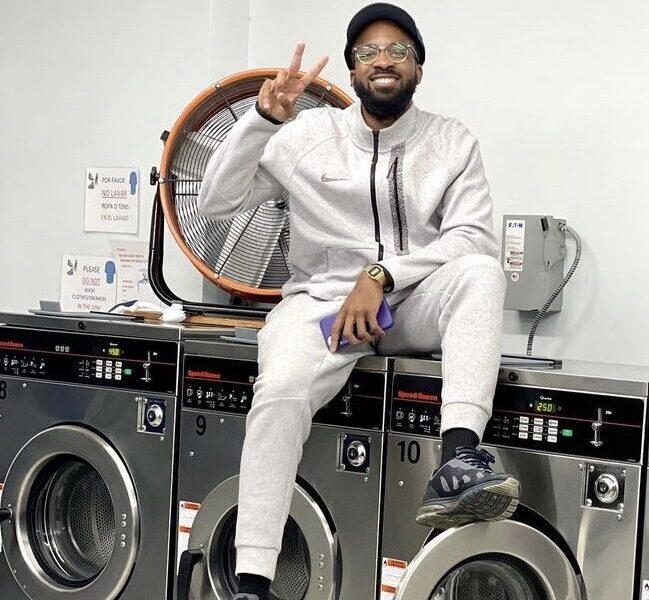
A Sister’s Love by Sofie Vasquez

A Sister’s Love by Sofie Vasquez

My Tia Julie had no intentions of leaving her life in Ecuador behind. Her choice to step onto the foreign New York City soil was simply a heartfelt, gracious favor to her little sister. But with her options weighed, my Tia Julie understood the choice was far from sweet, but it would be beneficial.
So, she decided to stay – with a visitor’s visa, making her an undocumented immigrant.
Julia Pièdad Orrala Gomez was born in Salinas, Ecuador on June 28th, 1927 to Bernardino Orrala and Modesta Cleotilde Gomez. The second eldest of the five Orrala children – Dora, Enrique, Manuel, and Mercedes – she is the only other Orrala sibling to have immigrated to the United States of America.
In 1969, the Ecuadorian military was giving visas with a green card status to those who had served and had the desire to immigrate. My grandfather – Segundo David Armas Palacios, a sergeant with twenty years of service under his belt – was given a visa and green cards for his entire family: my mother Mercedes Liliana, my uncle David William and my grandmother, Mercedes Orrala.
In 1964, there was a massive economic crisis that pushed Ecuadorians to move into the big cities or if possible, relocate and start a new life in the United States. Tempted by opportunities, on March 11th, 1969 my grandfather left his home in Guayaquil to New York City in the hopes of finding and securing a better, sustainable life for the future of his family.

After stepping out of the JFK Airport in Queens, my grandfather met with his half-brother in The Bronx where he was renting a room from a lady’s house on 183rd and Walton. My grandfather soon found work as an electrician in a factory. In the September of 1969, my grandmother followed shortly after, leaving her young children with their grandmother, Modesta, back in Salinas.
My grandparents searched for a home originally in Queens where a huge wave of Ecuadorians were settling, but they couldn’t help but be drawn back to The Bronx. Eventually, they found an apartment to rent in a building on 174th and Jerome. All they needed were their children.
A cousin from my grandmother’s side had promised her and my grandfather to bring their toddler children over, but for some inexplicable reason, she could no longer commit to the promise. Desperate, my grandmother frantically contacted her sister to take their cousin’s place and reunite her with her children. Of course, Julie couldn’t say no and so, she left her young children in the care of her mother with the promise of coming back soon, and in the December of 1970, my Tia Julie took my mother and uncle to their new life in The Bronx.
As of 1970, my Tia Julie has already lived forty-three years in Ecuador. She was the single mother of her five children – Luis, Vinicio, Perla, Francisco, and Marcelo – and worked comfortably as a secretary in the business city of Guayaquil. When she experienced her first winter in New York City’s notorious December climate just by stepping outside from the airport, she immediately craved the tempting sun back home with her children. It made no sense for her to leave.
However, my grandfather is a man of opportunity.

He took her aside and explained that the amount of money she was receiving monthly could double and be received weekly instead. He further explained the opportunities here that were nonexistent, especially in terms of education, and that she could build something here. My Tia struggled with this information. Half of her life was spent in Ecuador – she didn’t understand a word of English, Ecuadorian culture and traditions had been engrained in her, but what did this mean for her children? They were still young, only a few years older than their cousins although the eldest was twelve, and as a single mother back home, her monthly payments didn’t make her financially secure. Could the risk of beginning all over again in a foreign country help provide a secure future for her family?
A week later, Julie wrote a letter to her mother and her children explaining her difficult choice and her undetermined absence from Ecuador, but she promised she would secure a green card and ones for her sons and daughter. The Orrala sisters promised together to send money back home – one would pay for the rent, and the other would pay for food. Julie stayed with her sister on Jerome Avenue for six years and witnessed the birth of her niece, Eugenia, in 1971 and nephew, Franklin, in 1972 – the first children of the Armas-Orrala family to be born American citizens.
In 1976, Julie rented an apartment in the adjacent building from her sister’s. She already found work in a medical factory in Queens where she was responsible for testing the supplies and check if they were functional. Although the pay was better, Julie had difficulty adjusting to American culture and lived in constant fear of deportation and in fear of never seeing her sister again and lose everything she worked for. As she was working on getting her papers together, Julie reunited with an old flame from Ecuador known only as Senor Viteri in The Bronx. He courted her and fully aware that he had his paperwork together, she swiftly married him and in 1979, almost a decade later since she arrived, my Tia Julie successfully gained her green card as well as bring her children to the United States.


In 1980, Julia tearfully reunited with her children who were no longer children – the eldest was twenty-five and the youngest was seventeen going on eighteen. But was excited to start a new life with her family on a foundation she had singlehandedly built.
Now adults, Luis, Vinicio, Perla, and Francisco quickly scouted for jobs as Marcello, still a teenager, finished his education at Theodore Roosevelt High School in Fordham. Even with her children here, my Tia Julie continued to send money to support her mother till her death in 2005 at 101 years old. Tia Julie continued with the job in Queens, although she hadn’t quite adjusted to the American’s lack of respect for their employees. Yet, she continued to work there because it payed the rent until the company moved to North Carolina in 1983.

Since then, she took odd jobs from babysitting to sowing and cleaning, trying to put her youngest son in college – which he opted, like his brothers, to go to trade school instead. Because her children were adults now, she missed out on their adolescent years – something she regrets to this day. To make up for that loss, she heavily got involved in helping my grandmother with her family – something she continues to do every time she visits Mercedes, who in 1979 moved to the Soundview area of The Bronx when they found a space in a vacant house.

My Tia Julia and my grandma Mercedes have remained very close and since they’re the only family they had from Ecuador here, the sisters always made it a priority to spend time with each other – a commitment they continue till the present.
As she reflects on her past, I ask my Tia if she would have done anything differently. She doesn’t regret moving to the United States, she understands now it was the best decision she has ever made because it benefited her in the long run. Her only regret was the time she lost with her children, but she knew that her grandchildren were gifted exceptional opportunities and privileges that she wanted the lineage of her family to have.

At 91 years old, my Tia Julie still lives in the apartment on Jerome Avenue, except with the memories of her family plastered in frames around her.

*The opinions and ideas expressed are solely those of the author, and may not reflect the opinions of The Bronx Brand*
Sofie Vasquez is an Ecuatoriana photographer, and writer from the Morrison Soundview part of The Bronx. As a visual artist, Sofie is influenced by the subtle beauties and the stories of the people who live in The Bronx – and is constantly inspired to fully capture that genuine essence and experience from them through her work. The Bronx has something unbeatable, you can’t find anything else like it, not even in other boroughs or places in New York. The greatest thing about The Bronx is how in one street, in one avenue there are just pockets of different cultures, making everywhere in The Bronx so unique because it doesn’t replicate itself – it continues to create new things.
You can follow Sofie here:
Instagram: @bullsinthebrnx



